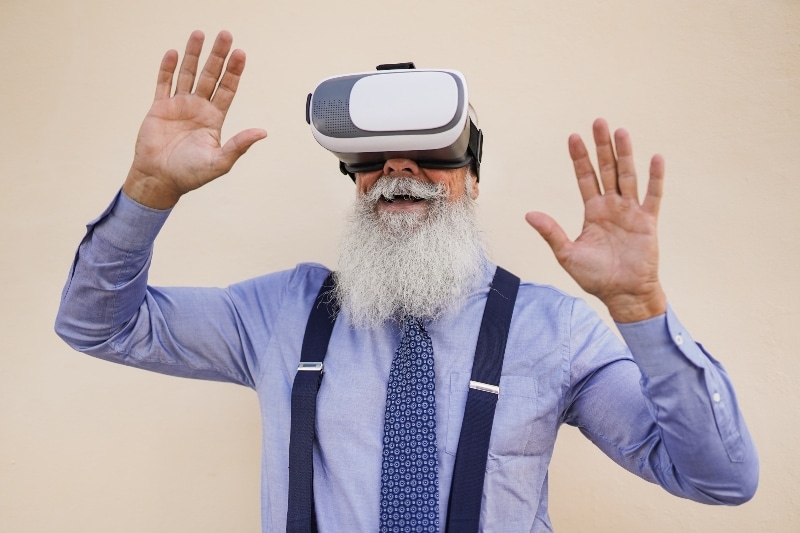The metaverse boom came at the turn of 2021 and 2022, but few may remember that the history of this industry began many years ago. Here are the most important dates and events of the past 50 years.
History of the metaverse: the roadmap
The history of the metaverse by @McKinsey pic.twitter.com/SSWdlBjMGi
— Blockworks (@Blockworks_) June 27, 2022
As McKinsey & Co. helpfully traces with its roadmap, it starts in 1978 with MUD1, the first real-time multiplayer virtual world, followed in 1982 by Tron, one of the first films to envision a digital reality with the protagonist being a computer programmer and video game developer who is transported inside the software world of a mainframe computer where he interacts with programs in an attempt to escape.
Tron is one of the first films in cinema to use computer-generated imagery (CGI).
However, there was actually no mention of the metaverse until then. The term was coined in 1992 by author Neal Stephenson, who first used the term “Metaverse” in his science fiction novel Snow Crash. This is why many people actually use this date to refer to the beginning of the history of metaverse.
In any case, there was talk of so-called “cyberspace” as early as 1984 with McKinsey writing the novel Neuromancer.
Of course, in the roadmap of the history of the metaverse, one cannot miss the famous Matrix movie of 1999, which imagines humanity within a virtual reality, followed by 2003 with Second Life, the first platform that allowed users to live in a virtual world, which exceeded 1 million monthly active users in 2007.
The history of the metaverse: current events and the future

Approaching current events, we cannot fail to mention Roblox, established in 2006, a multiplayer gaming platform that surpassed 55 million daily active users in February 2022.
Right after that, in 2018, comes Ready Player One, a film that imagines a real virtual world called “The Oasis” based on the 2011 book.
And finally, the last major step for the metaverse story is marked by Facebook with its rebrand into Meta last October 2021, created precisely to target the metaverse ecosystem.
Only two months after the launch, Meta had 300,000 new users between the US and Canada registered on the social metaverse platform.
While mentioning Roblox, it is also pertinent to mention platforms such as Fortnite or Minecraft, which can be considered part of the metaverse in its broadest definition, that is, platforms where avatars meet and interact with each other.
The “crypto” metaverse
Of course, we also cannot fail to mention the numerous metaverse projects that also integrate cryptocurrencies, such as The Sandbox, Decentraland, CryptoVoxel, The Nemesis, and OVER.
Decentraland kicks off in 2017 even though the land was not yet in NFT form at that time.
The company The Sandbox was founded in May 2012, although in the early days it was a video game for Android and iOS, of the type “sandbox mode.” It was then in 2018 that The Sandbox was acquired by development company Animoca Brands and turned into a full-fledged metaverse.
As for The Nemesis, the project kicked off in 2021, although the company was founded much earlier by Alessandro de Grandi. In this case, it is a metaverse with a gaming focus, where the various activities are based on the concept of gamification, and therefore aimed at an audience that is accustomed to video games but also to crypto, since on many occasions it interacts with NFTs and blockchain.
OVER is another metaverse created by an Italian company in 2017 and is focused on augmented reality. OVR allows users to build, host and display AR/VR experiences that are customized for specific geographic locations.
OVR decided to divide the digital world into 300-square-meter hexagons called OVRLands, which represent physical geographic locations. Each OVRLand is tokenized using Ethereum-based NFTs.
What does the future hold?
Following McKinsey & Co.’s own estimates, the metaverse could reach a value of $5 trillion by 2030.
Recently, other industry giants have also spoken out on the subject. Mathieu Nouzareth, The Sandbox CEO, described how even the blockchain-based metaverse is not being affected by the crypto bear market, like the current “crypto winter” we are experiencing.
Meanwhile, Mark Zuckerberg, CEO of Meta Platform, said in an interview that he imagines a billion people making hundreds of dollars in the new dimension.

